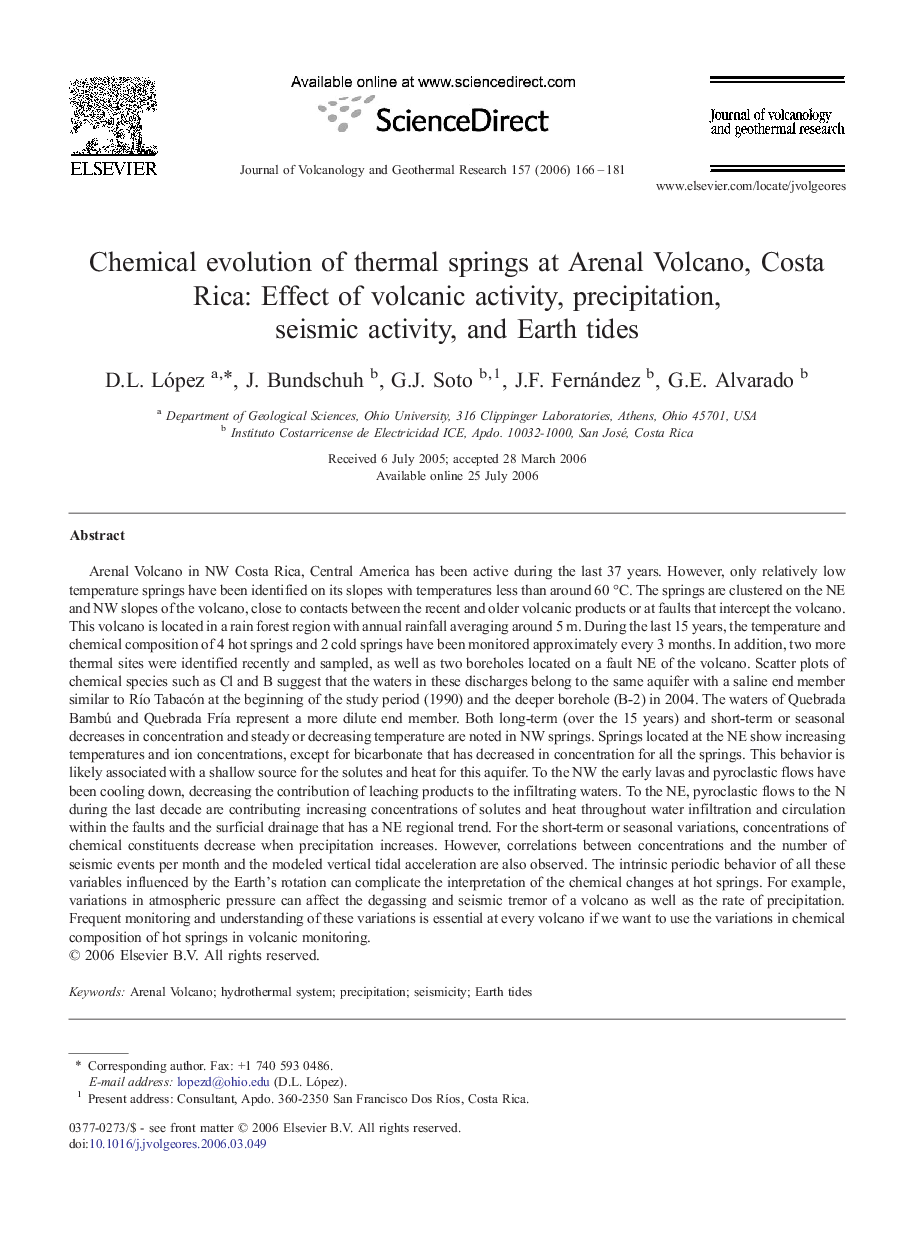| کد مقاله | کد نشریه | سال انتشار | مقاله انگلیسی | نسخه تمام متن |
|---|---|---|---|---|
| 4715364 | 1638472 | 2006 | 16 صفحه PDF | دانلود رایگان |

Arenal Volcano in NW Costa Rica, Central America has been active during the last 37 years. However, only relatively low temperature springs have been identified on its slopes with temperatures less than around 60 °C. The springs are clustered on the NE and NW slopes of the volcano, close to contacts between the recent and older volcanic products or at faults that intercept the volcano. This volcano is located in a rain forest region with annual rainfall averaging around 5 m. During the last 15 years, the temperature and chemical composition of 4 hot springs and 2 cold springs have been monitored approximately every 3 months. In addition, two more thermal sites were identified recently and sampled, as well as two boreholes located on a fault NE of the volcano. Scatter plots of chemical species such as Cl and B suggest that the waters in these discharges belong to the same aquifer with a saline end member similar to Río Tabacón at the beginning of the study period (1990) and the deeper borehole (B-2) in 2004. The waters of Quebrada Bambú and Quebrada Fría represent a more dilute end member. Both long-term (over the 15 years) and short-term or seasonal decreases in concentration and steady or decreasing temperature are noted in NW springs. Springs located at the NE show increasing temperatures and ion concentrations, except for bicarbonate that has decreased in concentration for all the springs. This behavior is likely associated with a shallow source for the solutes and heat for this aquifer. To the NW the early lavas and pyroclastic flows have been cooling down, decreasing the contribution of leaching products to the infiltrating waters. To the NE, pyroclastic flows to the N during the last decade are contributing increasing concentrations of solutes and heat throughout water infiltration and circulation within the faults and the surficial drainage that has a NE regional trend. For the short-term or seasonal variations, concentrations of chemical constituents decrease when precipitation increases. However, correlations between concentrations and the number of seismic events per month and the modeled vertical tidal acceleration are also observed. The intrinsic periodic behavior of all these variables influenced by the Earth's rotation can complicate the interpretation of the chemical changes at hot springs. For example, variations in atmospheric pressure can affect the degassing and seismic tremor of a volcano as well as the rate of precipitation. Frequent monitoring and understanding of these variations is essential at every volcano if we want to use the variations in chemical composition of hot springs in volcanic monitoring.
Journal: Journal of Volcanology and Geothermal Research - Volume 157, Issues 1–3, 15 September 2006, Pages 166–181